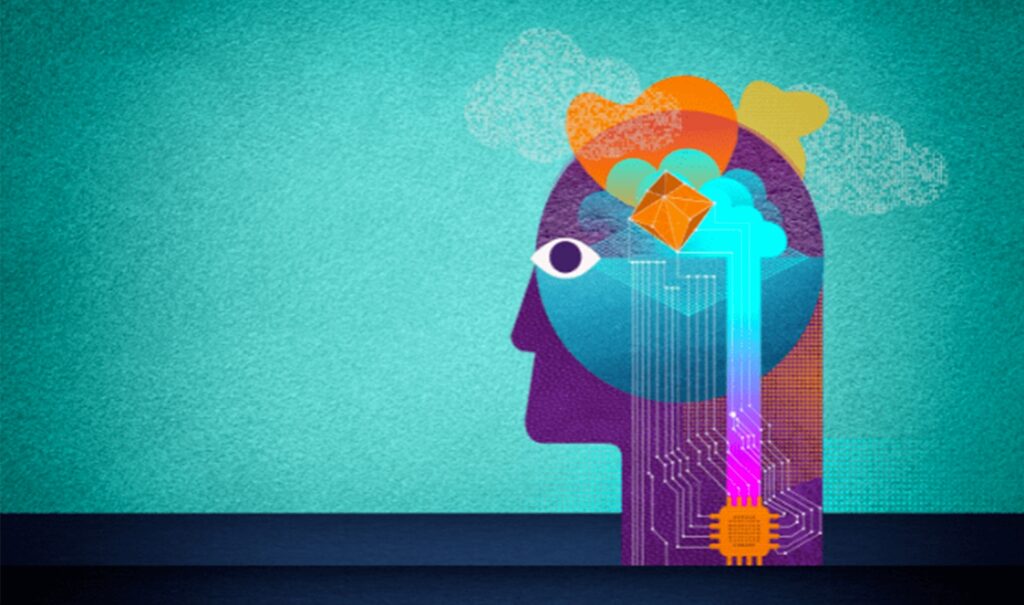Introduction
Learn how to use AI to make real money. We give you simple steps, the right tools, and real examples for anyone to try.
making money using ai

The Mindset Shift: Treating AI as Your Business Partner, Not a Magic Wand
Let’s just get this out of the way first. If you clicked on this article hoping for a single prompt that will spit out a fully functional, money-printing machine, I’m gonna disappoint you. Those YouTube ads are lying. The real opportunity with AI in 2025 isn’t in passive, magical income; it’s in active augmentation. Think of AI not as a replacement for you, but as the most competent intern you’ve ever hired—one that never sleeps, never complains, and can draft, analyze, and design at lightning speed. But you still have to be the boss. You provide the vision, the strategy, the niche knowledge, and the human touch. AI handles the grunt work. This shift from “doing the work” to “orchestrating the work” is the single most important concept to grasp. Your value is no longer just in your ability to execute tasks manually but in your ability to manage AI tools effectively, judge their output, and refine it into something truly valuable for an audience or a client. It’s a collaboration, not a delegation.
Why “Make Money Fast with AI!” Promises Are Mostly Garbage
I get it. The allure is strong. “Make $10,000 a month with ChatGPT!” The problem? Everyone else is reading the same clickbait. The market is now flooded with low-effort, AI-generated spam—articles that are factually shaky, e-books that are repetitive, and digital products with zero unique insight. This garbage gives AI a bad name and saturates the easy avenues. Platforms like Amazon KDP for e-books and content mills for writing are cracking down on obvious AI content because, frankly, it often sucks. It’s generic. It lacks a soul, a personal story, or a truly novel perspective. The “fast money” schemes are a race to the bottom, and you’re competing against a million other people using the exact same tools and prompts. The real, sustainable money isn’t in being the first to use AI; it’s in being the
best at using it within a specific, valuable context. It’s about adding so much of your own expertise and editing that the final product is unmistakably high-quality and human. using ai to make money
The Real Secret: Combining Your Niche Expertise with AI Efficiency
So, if the easy money is gone, what’s left? Everything else! The golden formula is painfully simple but requires actual work:
Your Unique Knowledge + AI Execution = Value. Let me give you a personal example. I’m a decent gardener, but I’m not a professional writer. Using AI, I can quickly outline and draft a comprehensive guide on “Heirloom Tomato Varieties for arid climates.” But here’s the key—I then spend hours editing it, adding my own photos, my personal anecdotes about which tomatoes actually survived the brutal summer heat, and which ones tasted the best. The AI did the heavy lifting of structure and research compilation; I provided the invaluable, first-hand experience. That’s a product people will pay for. What’s your niche? Maybe it’s fantasy football, keto baking, or local history. You have a domain of knowledge that AI doesn’t. Use AI to scale the
creation and
distribution of that knowledge, not to generate the knowledge itself. That’s the 2025 strategy.

Content & Creative Monetization: Leverage AI for the Written and Visual World
This is the most obvious starting point for many, and for good reason. AI language and image models are incredibly accessible and powerful. But again, the key is to move beyond basic generation. Use AI as your brainstorming partner, your first-draft writer, your editor, and your design assistant. For instance, you can prompt a tool like Midjourney or DALL-E 3 to create visual concepts for a story you’re writing, or use ChatGPT to overcome writer’s block by asking it to suggest ten different introductions for your article. The monetization paths here are diverse. You could run a niche blog supported by affiliate marketing and ads, with AI helping you pump out consistent, high-quality SEO-optimized content faster. Or, you could offer your services as a freelance writer who specializes in using AI to deliver projects faster for clients, effectively increasing your earning potential per hour. The tools are there; your creativity in applying them is the limiting factor.
AI-Powered Freelance Writing and Blogging: Scale Your Output
Gone are the days of staring at a blank page. As a freelance writer, my process has been utterly transformed. Here’s my not-so-secret workflow: I use AI to break down a client’s brief into a detailed outline, complete with suggested headings and key points to cover. I then task it with drafting specific sections, especially the more data-heavy or explanatory parts. But—and this is a huge but—I never, ever copy-paste. I rewrite every single sentence in my own voice. I add my own jokes, my own phrasing, and my own opinions. The AI has done 70% of the initial work, but the final product is 100% mine. This allows me to take on more work without sacrificing quality or burning out. For bloggers, this is a game-changer for building topical authority. You can target a whole cluster of keywords around a subject quickly. Want to write a pillar post on “Sustainable Travel”? AI can help you draft supporting articles on “best eco-friendly hotels in Europe” and “how to pack a zero-waste suitcase” in a fraction of the time.
Selling AI-Generated Art and Assets: From Print-on-Demand to NFTs
The visual art world has been rocked by AI, but the opportunity isn’t just in creating pretty pictures. It’s in creating
targeted visual assets. Platforms like Redbubble, Society6, and Etsy are full of AI art, but the best-selling stuff isn’t random fantasy art. It’s specific, niche-focused designs. Think “Sarcastic Librarian Quotes” on a mug or “Minimalist Hiking Motifs” on a t-shirt. You can use AI to rapidly prototype designs, see what resonates, and then scale production. For example, you could use a tool like Midjourney to generate a unique illustration style for a children’s book and then sell prints of the characters. Another avenue is in generating assets for other creators—unique textures, background patterns, or concept art for game developers. While the NFT market for AI art has cooled from its frenzy, there’s still a market for well-curated, thematic collections from artists who have a distinct style and story, even if the initial rendering is AI-assisted.
Watch my more articles, check here
https://earnaidesk.com/create-digital-products-with-ai/
Building Digital Assets: Create “Set-and-Forget” Revenue Streams
This is my favorite category because it aligns with building long-term, scalable wealth. Instead of trading hours for dollars (even if AI makes those hours more productive), you’re building a digital asset that can earn money while you sleep. AI is the ultimate force multiplier here, dramatically reducing the barrier to entry for creating complex products. We’re talking about everything from informative e-books and online courses to software tools and automated chatbots. The initial setup requires work, but once it’s live on a platform like Gumroad, Teachable, or even your own website, it can generate passive income for years with minimal upkeep. AI helps you go from “I have an idea” to “I have a product” faster than ever before, allowing you to test more ideas and double down on what works.
Creating and Selling AI-Coded Digital Products (E-books, Guides, Tools)
Let’s bust a myth: you don’t need to be a programmer to create software tools anymore. With AI assistants like ChatGPT (especially with Advanced Data Analysis mode) or dedicated AI coding tools, you can describe a function and get the code. Imagine building a simple web app that helps small businesses calculate their carbon footprint, or a custom spreadsheet template for social media analytics. You can script, debug, and document these tools with AI’s help and sell them. For written products, the process is even more straightforward. Use AI to research and structure a comprehensive guide on a topic you know well—say, “The Ultimate Guide to Solo Travel in Southeast Asia.” You then meticulously edit, add personal stories, and format it. You can use AI to even help you write the sales copy for the product page! This approach lets you create a whole suite of digital products that cater to a specific audience.
Developing and Monetizing Niche AI Chatbots and Assistants
This is a massive emerging field. Businesses and individuals are desperate for specialized help, and generic ChatGPT can’t always provide it. If you have expertise in a area—say, real estate law, vintage car restoration, or vegan nutrition—you can use no-code platforms like Botpress, Landbot, or even OpenAI’s own tools to train a custom chatbot on a curated knowledge base. You could then offer this as a subscription service to small law firms, auto shops, or dietitians, or even sell access to individuals directly. For example, a “First-Time Home Buyer’s Assistant” chatbot that answers common questions about mortgages, inspections, and contracts could be incredibly valuable. You’re not just selling information; you’re selling a convenient, interactive experience. The AI handles the 24/7 customer queries, and you collect the monthly fee.
Service-Based & Client Work: Supercharge Your Existing Skills
Not everyone wants to build products. Many of us are fantastic at providing services. AI is here to make you better, faster, and more valuable to your clients. It’s the ultimate competitive advantage. Whether you’re a marketer, a virtual assistant, a consultant, or a tutor, there’s an AI tool that can eliminate the boring parts of your job. This allows you to focus on high-level strategy, creative thinking, and client relations—the things that actually command higher rates and retain customers. By integrating AI into your workflow, you can offer more services, deliver results faster, and essentially operate at a level beyond what your current pricing might suggest. It’s about leveling up your entire operation.
Offering AI-Enhanced Business Services (Marketing, Data Analysis)
This is a goldmine. Small and medium-sized businesses often can’t afford a full-time marketing team or data analyst. But they can afford
you, a savvy freelancer or agency armed with AI. Offer social media management services using tools like Jasper or
Copy.ai to brainstorm and draft dozens of post captions and ideas in minutes. Use Canva’s AI to quickly generate visual concepts. Use an AI tool like Otter.ai to transcribe client meetings and then use ChatGPT to summarize action points. For data analysis, you can take a client’s messy sales spreadsheet, feed it to ChatGPT’s data analysis feature, and ask it to identify trends, forecast next quarter’s sales, and create visualizations. You then interpret those findings for the client and recommend strategies. You’re not just delivering data; you’re delivering actionable insights, and AI does the heavy computational lifting.
make money with artificial intelligence
AI-Powered Tutoring and Course Creation: Teach What You Know, Faster
If you’re knowledgeable about a subject, people will pay to learn it. AI demolishes the technical barriers to becoming an educator. Use it to outline your entire course curriculum. Feed it your old notes and ask it to generate quiz questions, draft lesson scripts, and create summary sheets. You can even use AI avatars and voice synthesis (though I’d recommend using your own face and voice for authenticity) to create video content. As a tutor, use AI to create personalized practice problems for your students based on their weak areas. For instance, a math tutor could prompt AI to “generate 5 calculus problems focusing on the chain rule, with varying difficulty, and provide step-by-step solutions.” This allows you to provide highly customized support without spending hours prepping materials. You focus on the teaching and mentoring—the human connection—while AI handles the content generation logistics.
Conclusion: Your AI-Powered Future Starts Now (But It’s a Marathon, Not a Sprint)
So, where does this leave us? The message isn’t that AI is a genie that’ll grant your financial wishes. Frankly, that’s a exhausting fantasy. The real, gritty, and incredibly exciting truth is that AI is the ultimate power tool for the modern hustler, the creative, and the entrepreneur.
It won’t replace you. But a person using AI absolutely will.
The strategies we’ve covered—from content creation and building digital assets to supercharging your client services—all hinge on one non-negotiable ingredient:
you. Your unique perspective, your niche knowledge, your ability to connect with people, and your willingness to edit, refine, and put in the work. AI is the engine, but you are the driver, the navigator, and the one who decides on the destination.
Don’t get overwhelmed trying to do everything at once. My advice? Pick one thing. Just one. Maybe it’s revamping your freelance writing workflow with the rewrite method I use. Maybe it’s finally creating that digital guide you’ve always thought about. Start there. Experiment. Fail. Tweak your prompts. Learn what works.
The opportunity in 2025 isn’t for the passive; it’s for the proactive. It’s for those willing to learn, adapt, and merge their human intelligence with artificial intelligence. The tools are here, they’re accessible, and they’re waiting. Your job is to bring the vision. Now go build something.





